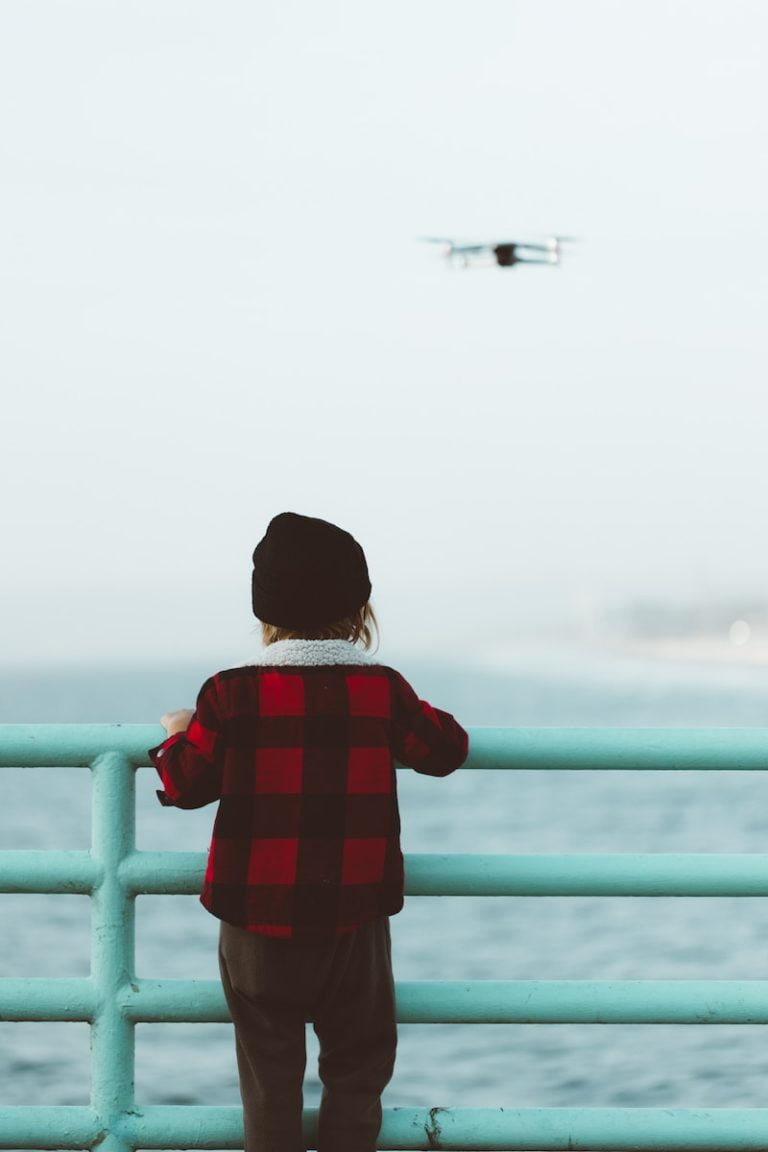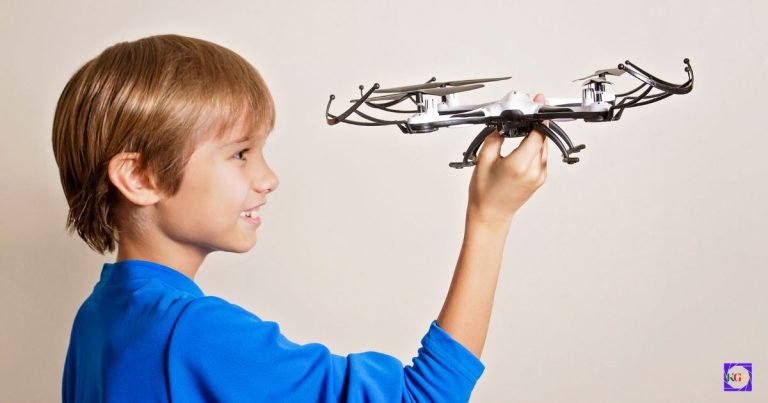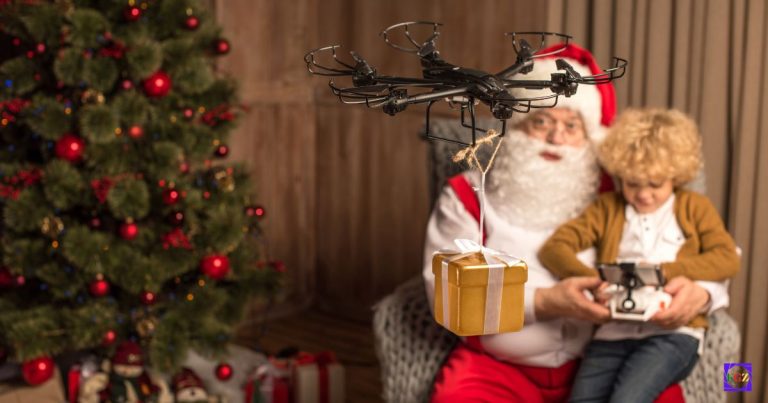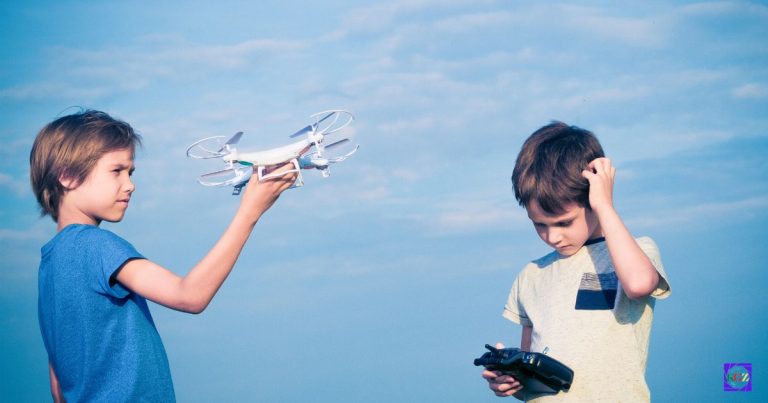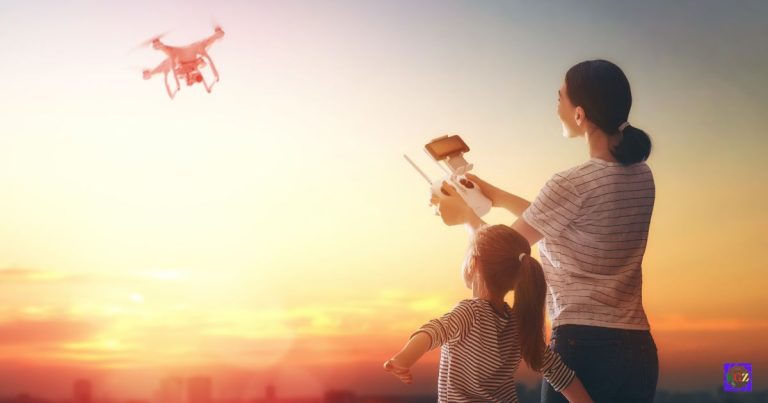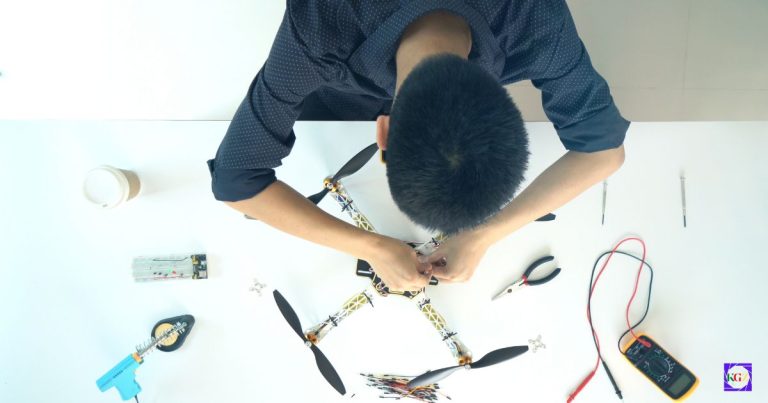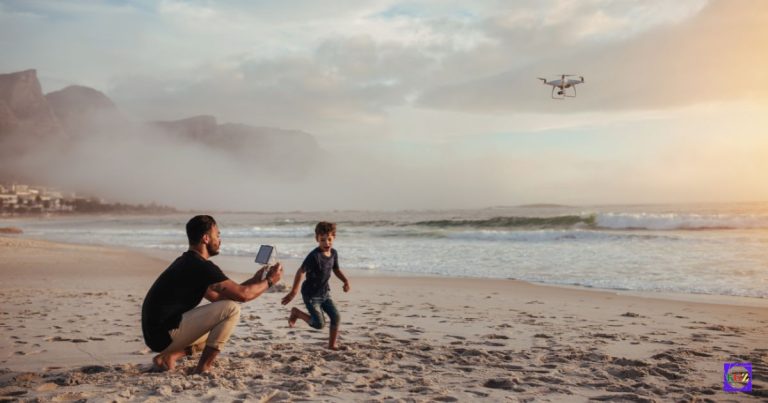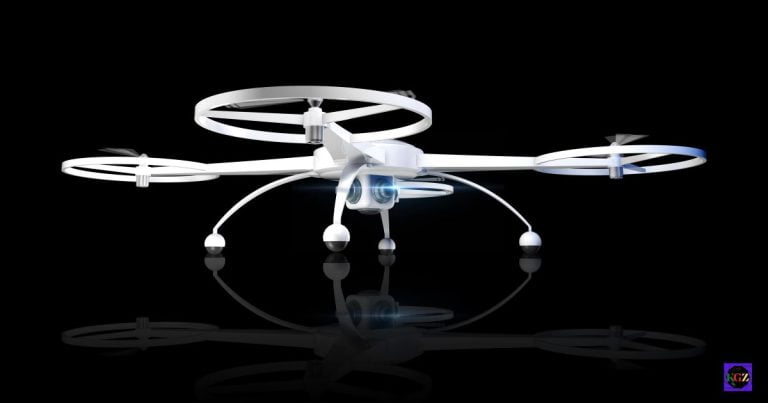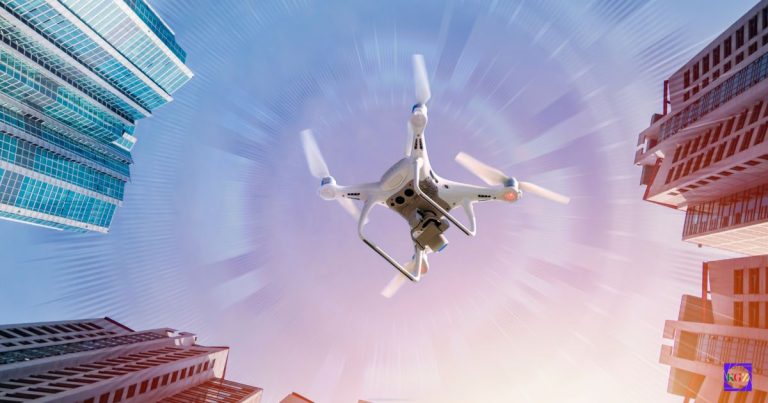Drones have become a popular and exciting toy for kids. They allow children to explore the world from a different perspective and develop a range of skills, including hand-eye coordination and problem-solving. However, as with any new technology, there are risks associated with drones. As a parent, it’s important to know the safety tips for kids who want to fly drones. In this article, we will discuss ten important safety tips to ensure your child’s safety while using drones.
Drones have become a popular toy for kids of all ages. They are fun, exciting, and allow children to explore the world from a different perspective. However, with the rise in popularity of drones, it’s important for parents to know the safety tips for kids who want to fly drones. In this article, we will discuss ten important safety tips to ensure your child’s safety while using drones.
1. Choose Age-Appropriate Drones
When buying a drone for your child, it’s important to choose an age-appropriate model. Drones come in different sizes and shapes, and some are more complicated than others. For young children, it’s best to choose a simple drone that is easy to operate. Older children may be able to handle more complex drones, but it’s important to always choose a model that is suitable for their age and skill level.
Drones are a popular toy for kids of all ages, but it’s important to choose an age-appropriate drone for your child. Different drones have different features and capabilities, so it’s important to choose a drone that your child can easily operate and control. Here are some tips for choosing an age-appropriate drone:
Check the age recommendations
Most drones have age recommendations on the packaging or in the product description. It’s important to follow these recommendations to ensure that the drone is safe and appropriate for your child’s age and skill level. Generally, drones for younger children will have simpler controls and fewer features than drones for older children.
Consider the drone’s size and weight
The size and weight of the drone are important factors to consider when choosing an age-appropriate drone. Smaller drones are generally easier to control and safer for younger children, while larger drones may be more difficult to control and better suited for older children. It’s also important to consider the weight of the drone, as heavier drones can be more dangerous if they crash or collide with something.
Choose a simple model
For younger children, it’s best to choose a simple drone with easy-to-use controls. Look for a model with a one-button takeoff and landing feature, as this can help prevent crashes and make it easier for your child to control the drone. Avoid drones with complicated control schemes or features that your child may not understand.
Look for safety features
Some drones come with built-in safety features that can help prevent accidents and injuries. Look for drones with automatic shut-off features, obstacle avoidance sensors, and low-battery warnings. These features can help make the drone safer and easier to use for your child.
2. Always Supervise Children
Children should never be allowed to fly drones unsupervised. Even if your child is responsible and has experience flying drones, accidents can happen. As a parent, it’s important to always be present and supervise your child while they are flying the drone.
Flying a drone can be a fun and exciting activity for kids, but it’s important to always supervise them while they are flying. Drones can be dangerous if they are not used properly, and accidents can happen even with the most age-appropriate and well-designed drones. Here are some tips for supervising your child while they are flying a drone:
Know the rules and regulations
Before allowing your child to fly a drone, it’s important to familiarize yourself with the rules and regulations in your area. In the United States, the Federal Aviation Administration (FAA) has guidelines for flying drones, including restrictions on where and how high drones can be flown. Make sure to follow these guidelines to ensure that your child is flying the drone safely and legally.
Choose a safe location
When supervising your child while they are flying a drone, it’s important to choose a safe location free of obstacles and hazards. Look for an open area away from power lines, trees, and other obstacles. Avoid flying the drone near people or animals, as this can be dangerous and may cause accidents or injuries.
Keep a close eye on your child
While your child is flying the drone, it’s important to keep a close eye on them at all times. Make sure they are following safe flying practices and that they are not endangering themselves or others. If your child is flying the drone too close to people or obstacles, gently remind them to move to a safer location.
Teach your child safe flying practices
Before allowing your child to fly a drone, it’s important to teach them safe flying practices. This includes proper handling of the drone, how to take off and land safely, and how to avoid collisions with obstacles. Teach your child to always keep the drone in sight and to avoid flying the drone in bad weather or high winds.
3. Choose a Safe Location
When flying a drone, it’s important to choose a safe location. Avoid areas with power lines, trees, and other obstacles. Also, make sure the location is open and free of people and animals. A large open field is an ideal location for flying a drone.
Choosing the right location to fly a drone is just as important as selecting an age-appropriate and safe drone for your child. Flying drones in public areas can be dangerous and potentially harmful to others, which is why it’s important to find a safe location for drone flights. Here are some tips for choosing a safe location to fly a drone:
Know the rules and regulations
Before flying a drone in any location, it’s important to check the rules and regulations in your area. In many countries, flying a drone in public spaces requires a permit or license, and there may be specific rules about where and how high drones can be flown. Make sure to research these guidelines and follow them to ensure a safe and legal drone flight.
Avoid crowded areas
When choosing a location to fly a drone, it’s important to avoid crowded areas such as parks or busy streets. Flying drones near people or animals can be dangerous and may cause accidents or injuries. Instead, look for a quiet and open area away from crowds where your child can fly the drone safely.
Look for open spaces
Open spaces such as fields or empty lots are ideal for flying drones. These areas provide plenty of room for your child to fly the drone safely without the risk of colliding with obstacles or hazards. Make sure to choose an area that is large enough for your child to maneuver the drone without the risk of losing control.
Stay away from obstacles and hazards
Obstacles such as trees, power lines, or buildings can pose a significant danger to drone flights. Make sure to choose a location that is free from these obstacles and other hazards such as bodies of water or high winds. Always make sure that your child is flying the drone within their line of sight to avoid collisions.
Consider the weather conditions
Weather conditions can greatly affect the safety and stability of a drone flight. Avoid flying drones in bad weather such as rain or high winds, which can cause the drone to lose control or crash. Choose a day with clear skies and mild winds to ensure a safe and enjoyable drone flight.
4. Check for Local Regulations
Before flying a drone, it’s important to check for local regulations. Many cities and states have laws and regulations regarding drone usage. Make sure you are familiar with the rules and regulations in your area to avoid any legal issues.
When it comes to flying a drone, there are specific rules and regulations that need to be followed to ensure safety and compliance. Before allowing your child to fly a drone, it’s important to check for local regulations and guidelines that may be in place. Here are some tips on how to check for local regulations:
Research local guidelines and regulations
Different countries and regions have their own specific rules and regulations for flying drones. Some may require a license or permit to fly a drone in public spaces, and there may be specific restrictions on where and how high drones can be flown. It’s important to research these guidelines and regulations to ensure that you and your child are flying the drone safely and legally.
Check for no-fly zones
Many areas have designated “no-fly zones” where drones are not allowed to be flown. These areas may include airports, military bases, and other sensitive locations. It’s important to check for no-fly zones in your area and to avoid flying drones in these locations to avoid potential accidents or legal consequences.
Be aware of privacy laws
When flying a drone, it’s important to be aware of privacy laws that may be in place in your area. Drones equipped with cameras can capture images and video footage of people and private property, which can be a violation of privacy laws. Always make sure to respect the privacy of others and to avoid flying drones near private property without permission.
Understand the consequences of breaking the rules
Breaking the rules and regulations for flying drones can result in fines, legal consequences, and potential safety hazards. It’s important to understand the consequences of breaking the rules and to ensure that you and your child are flying the drone in compliance with local regulations.
Keep up to date with changes in regulations
Drone regulations are constantly evolving, which is why it’s important to keep up to date with any changes in local regulations. Changes in regulations can impact where and how drones can be flown, as well as the safety guidelines that need to be followed. Stay informed and make sure that you and your child are following the most up-to-date guidelines for flying drones.
5. Follow Manufacturer’s Instructions
Every drone is different, and it’s important to read and follow the manufacturer’s instructions. Make sure your child understands how to operate the drone and knows what to do in case of an emergency.
Drones come in various shapes and sizes, with different features and capabilities. As such, it’s important to follow the manufacturer’s instructions for each specific drone to ensure that it’s being used safely and effectively. Here are some tips on how to follow manufacturer’s instructions:
Read the instruction manual thoroughly
Every drone comes with an instruction manual that provides detailed information on how to operate and maintain the drone. It’s important to read the instruction manual thoroughly before using the drone to ensure that you and your child understand how to use it safely and effectively.
Check for firmware updates
Drones are complex pieces of technology that can benefit from regular software updates. Checking for firmware updates before flying the drone can ensure that it’s functioning properly and can also improve performance and safety features.
Use recommended batteries and accessories
Using recommended batteries and accessories for your drone can help ensure that it’s functioning properly and safely. Using incompatible batteries or accessories can damage the drone or cause it to malfunction, potentially leading to safety hazards.
Follow weight and payload restrictions
Every drone has specific weight and payload restrictions that need to be followed to ensure safe and stable flight. Overloading the drone can cause it to crash or become unstable, potentially causing harm to people or property.
Practice in a safe and open area
Before flying the drone in a public area, it’s important to practice in a safe and open area to get a feel for how the drone operates. This can help you and your child become more comfortable with the drone and reduce the risk of accidents or mishaps when flying in more crowded or complex areas.
6. Pre-Flight Checklist
Before flying the drone, it’s important to conduct a pre-flight checklist. This includes checking the battery, propellers, and other components.
Performing a pre-flight checklist is an important step to take before flying a drone. It can help ensure that the drone is in good working condition and can reduce the risk of accidents or mishaps. Here are some items to include in a pre-flight checklist:
Check the battery level
Make sure the drone’s battery is fully charged before takeoff. Flying a drone with a low battery can lead to unexpected shutdowns, potentially causing the drone to crash or become lost.
Inspect the drone for damage
Before flying the drone, inspect it for any damage or wear and tear. Look for cracks or dents in the body or propellers, and ensure that all parts are properly attached and secure.
Ensure the propellers are attached correctly
The propellers are crucial to the drone’s flight and stability. Make sure that the propellers are attached correctly and securely, and that there are no cracks or damage to them.
Verify the remote control is functioning properly
The remote control is the interface between the drone and the user, so it’s important to ensure that it’s functioning properly before flying. Check the battery level, buttons, and joysticks to ensure they are responsive and working correctly.
Check the GPS signal strength
Many drones come equipped with GPS technology that can help with navigation and flight stability. Before flying, check the GPS signal strength to ensure that it’s strong enough to support safe and stable flight.
7. Teach Respect for Privacy
Drones equipped with cameras can be a privacy concern for others. It’s important to teach your child to respect other people’s privacy while flying a drone. They should avoid flying the drone over other people’s property or taking pictures or videos of people without their permission.
Drones equipped with cameras can raise concerns about privacy and the potential for invasive or inappropriate behavior. As a parent, it’s important to teach your child about respecting the privacy of others when flying a drone. Here are some tips on how to teach respect for privacy:
Know the privacy laws in your area
Privacy laws regarding drones can vary by state or country, so it’s important to familiarize yourself with the laws in your area. For example, some places may have restrictions on where drones can be flown or what they can record. Knowing the laws can help you and your child avoid potential legal issues.
Fly at a safe distance from people and property
When flying a drone, it’s important to maintain a safe distance from people and property to ensure that you’re not intruding on anyone’s privacy. Flying too close to people or property can be intrusive and potentially dangerous, so it’s important to maintain a safe distance.
Avoid flying over private property without permission
Flying a drone over someone’s private property without their permission can be considered an invasion of privacy. Always respect the privacy of others and avoid flying over private property without first obtaining permission from the property owner.
Don’t record people without their consent
Recording people without their consent can be a violation of their privacy. Teach your child to always ask for consent before recording someone with a drone, and to respect their decision if they decline.
Be mindful of your surroundings
When flying a drone, it’s important to be mindful of your surroundings and any potential privacy concerns. If you notice that your drone is flying near an area where people may be concerned about their privacy, it’s best to fly elsewhere to avoid any issues.
8. Maintain Visual Contact
It’s important to maintain visual contact with the drone at all times. Your child should never fly the drone out of their line of sight. This will help prevent collisions and ensure your child knows the drone’s location at all times.
One of the most important safety tips for flying a drone is to maintain visual contact with the drone at all times. Here are some reasons why this is important and some tips for how to maintain visual contact:
Importance of maintaining visual contact
Maintaining visual contact with your drone is important for several reasons. First, it allows you to see any potential obstacles or hazards that may be in the drone’s flight path. It also allows you to monitor the drone’s battery life and make sure it doesn’t fly out of range.
Tips for maintaining visual contact
Here are some tips for maintaining visual contact with your drone:
Always keep the drone in your line of sight.
Avoid flying the drone too high or too far away.
Use a spotter to help you keep an eye on the drone.
What to do if you lose sight of the drone
If you lose sight of your drone, there are a few things you can do to try to find it:
Activate the drone’s “return to home” feature, if it has one.
Listen for the drone’s sound to help you locate it.
Use the drone’s GPS location feature, if it has one.
The risks of flying without visual contact
Flying a drone without maintaining visual contact can be dangerous and increase the risk of accidents. Without visual contact, you may not be able to see obstacles or hazards in the drone’s flight path, and you may not be able to monitor the drone’s battery life or flight status.
9. Beware of Weather Conditions
Weather conditions can affect the safety of flying a drone. Your child should avoid flying the drone in high winds, rain, or snow. These conditions can make it difficult to control the drone and can cause it to crash.
Flying a drone in inclement weather can be dangerous and increase the risk of accidents. Here are some weather conditions to be aware of when flying a drone and some tips for how to stay safe:
Weather conditions to be aware of
Here are some weather conditions to be aware of when flying a drone:
Strong winds: Windy conditions can cause your drone to drift or be blown off course.
Rain: Water can damage your drone’s electrical components and interfere with its GPS signal.
Snow or ice: These conditions can make it difficult to control your drone and may cause it to malfunction.
Tips for flying in different weather conditions
Here are some tips for how to stay safe when flying in different weather conditions:
Windy conditions: Avoid flying in wind speeds of over 20 mph. If it’s windy, try to fly your drone in a sheltered area.
Rain: Avoid flying in the rain or snow, as moisture can damage your drone’s electrical components. If you must fly in the rain, use a waterproof drone and avoid flying in heavy rain or thunderstorms.
Snow or ice: Avoid flying in these conditions, as they can make it difficult to control your drone and may cause it to malfunction.
The risks of flying in inclement weather
Flying a drone in inclement weather can increase the risk of accidents and damage to your drone. Strong winds can cause your drone to crash or be blown away, while rain or snow can damage your drone’s electrical components and interfere with its GPS signal.
When to avoid flying altogether
If the weather conditions are not suitable for flying your drone safely, it’s best to avoid flying altogether. Always check the weather forecast before you fly, and if you notice any changes in weather conditions while you’re flying, land your drone immediately.
10. Know What to Do in an Emergency
Your child should know what to do in case of an emergency. If the drone is out of control, your child should immediately stop flying it and bring it back to the ground. They should also know how to shut off the drone in case of an emergency.
Despite all precautions, accidents can happen. Knowing how to respond in an emergency can help reduce the risk of injury and damage to your drone. Here are some tips for what to do in case of an emergency:
Types of drone emergencies
Here are some types of drone emergencies to be aware of:
Flyaway: Your drone may fly away and become unresponsive due to signal interference, software glitches, or other issues.
Crash: Your drone may crash due to collisions with obstacles, malfunctions, or other factors.
Loss of control: You may lose control of your drone due to interference, wind, or other factors.
Battery failure: Your drone’s battery may fail, causing it to crash or become unresponsive.
Injury: Someone may be injured by your drone, either from a collision or from being hit by falling debris.
What to do in an emergency
Here are some tips for what to do in case of an emergency:
Flyaway: Try to regain control of your drone using the controller or return-to-home function. If you can’t, try to track its location and retrieve it later.
Crash: Assess the damage to your drone and any property or people that may have been affected. Stop flying if necessary and report any injuries or damages.
Loss of control: Try to regain control of your drone using the controller or return-to-home function. If you can’t, try to land it safely in an open area away from people or property.
Battery failure: Land your drone as soon as possible to prevent further damage or injury. Check the battery and replace it if necessary.
Injury: Seek medical attention for any injuries and report the incident to the authorities if necessary.
Emergency response checklist
Here is a checklist of steps to take in case of an emergency:
Assess the situation and any risks to people or property.
Stop flying if necessary and take immediate action to prevent further damage or injury.
Report any injuries or damages to the authorities and cooperate with their investigation.
Document the incident and any damages to your drone or other property.
Review the incident and identify any factors that may have contributed to the emergency.
How to prevent emergencies
Here are some tips for how to prevent emergencies from happening in the first place:
Follow all safety tips and guidelines for flying your drone.
Regularly check your drone for signs of wear and tear, and replace any damaged or worn parts.
Keep your drone away from people and property, and avoid flying over crowds or busy areas.
Use caution when flying in new or unfamiliar locations, and be aware of any hazards or obstacles.
Always have a backup plan in case of emergency, such as a spare battery or landing area.
FAQs
- Can a child fly a drone alone?
No, children should never fly drones alone. They should always be supervised by an adult.
- Is it legal for children to fly drones?
Yes, children can fly drones, but they must follow the same regulations as adults.
- What age is appropriate for a child to start flying a drone?
The appropriate age for a child to start flying a drone varies depending on the child’s maturity and skill level. Generally, children over the age of 10 are able to handle simple drones.
- Are drones safe for children?
Drones can be safe for children as long as proper safety precautions are taken, such as choosing age-appropriate models and always supervising children while they are flying.
- Can drones be flown indoors?
Yes, drones can be flown indoors, but it’s important to choose a safe location free of obstacles and breakable items.
Conclusion
Drones are a fun and exciting toy for kids, but it’s important to know the safety tips for kids who want to fly drones. As a parent, it’s your responsibility to ensure your child’s safety while using drones. By following these ten safety tips, you can help your child enjoy flying drones while staying safe. Remember to always supervise your child while they are flying a drone and to choose age-appropriate models that are easy to operate. With these precautions, you can help ensure a fun and safe experience for your child.
